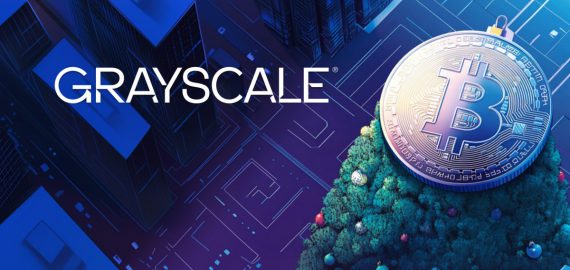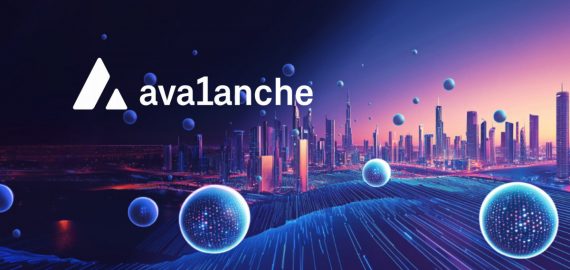Web3 Data Needs an Upgrade – And SQD Network’s Portal Might Be It


In Brief
SQD Network’s upcoming Portal upgrade transforms Web3 data delivery from on-demand requests to continuous streaming, giving developers faster, multi-chain, real-time data for more reliable and composable applications.
Data is arguably the most precious onchain resource of all. Not only must it be delivered with sufficient rapidity and volume, but it must be supplied to decentralized applications, whose distributed design adds complexity. Throw in the fact that dapps now routinely require the latest data not just from their native chain, but from dozens of other blockchains and protocols – as well as off-chain sources – and it’s easy to see why reliable access to real-time data is so desirable and yet so hard to reliably attain.
Just as the computational demands of computers processing AI workloads has prompted a GPU arms race, something similar is occurring with Web3 data delivery. No matter how much infra providers supply, applications demand more. Now, in a bid to keep pace with the escalating data demands of the dapps and centralized applications it serves, SQD has done something bold: it’s torn up its current playbook and devised an entirely new delivery framework.
Its name is Portal and it will be the principal feature that’s implemented when SQD undergoes its next network upgrade. If Portal lives up to its billing, it has the potential to level up Web3 data while making it easier for developers to create composable applications. These will be equipped with endless data that isn’t delivered on demand, but is instead streamed, ensuring that accurate pricing and other blockchain events are always available. Let’s unpack how it works and the challenges Portal aims to solve.
Addressing Web3’s Data Problem
At present, blockchain applications operate in an environment where data arrives only when requested. That worked fine when blockchains were fewer and their data requirements predictable. But as networks have scaled and real-time systems emerged, from algorithmic trading to autonomous agents, the traditional request-response model has begun to strain. SQD’s upcoming upgrade, Portal, is an attempt to solve that tension by moving Web3 from “pulling” data to continuously receiving it.
At present, SQD provides developers with indexed data at the moment they ask for it. Dapps make a request – say for price updates or transaction histories – and SQD returns the latest information it has indexed. Portal changes this pattern by continuously streaming updates as they occur onchain.
The shift may sound subtle, but this streaming architecture does more than merely reduce latency. It changes not just how data is delivered, but what developers can realistically build on top of it. It replaces a model built on indexing and querying with a framework designed to deliver constant streams of on- and off-chain information. For a rapidly expanding blockchain ecosystem, this turns high-volume, multi-source data into something that arrives automatically and stays up-to-date without extra engineering overhead.
The first-order benefits of this shift are easy to grasp: data will be supplied more rapidly and with greater accuracy, ensuring that dapps always have the latest information to work with, whether it’s the price of BTC to power perps markets or the latest sports odds to inform prediction markets. But over and above this, Portal – with the aid of the accompanying Pipes SDK which is also bundled with the network upgrade – does more. It simplifies dapp creation, enabling builders to create sophisticated multi-chain applications.
More Data, More Modularity
Portal’s streaming model eliminates the round-trip inherent in RPC-style requests, allowing applications to stay synced with the latest events in real time. For execution-sensitive systems such as perps trading or onchain AI agents, that difference matters more than ever.
Portal also arrives with a fully redesigned query engine written in Rust. This improves stability and error handling while reducing SQD’s reliance on a centralized gateway. Instead, Portal forms a decentralized network where performance does not hinge on a single bottleneck. But the second-order effects that Portal engenders are just as vital, because when paired with the Pipes SDK, it empowers devs to create highly modular applications.
Portal handles the raw transport layer while Pipes gives developers the ability to actually use that stream effectively. This setup allows developers to build their own data pipelines, while giving teams flexibility to integrate with their existing architecture. The result is a combination of speed, control, and composability.
Smarter, Faster
Once Portal goes live, multi-chain applications that once needed several indexing solutions can operate on a consolidated stream that includes both blockchain and off-chain sources. For emerging categories such as LLM-powered smart contracts or real-time prediction markets, this expands what’s technically feasible.
When we talk about composability, what we’re actually referring to is the ease with which developers can connect different onchain components in the manner that’s caused DeFi to sometimes be described as “money Legos.” You can connect Uniswap’s open-source AMM with liquidity sourced from Orbs and vault optimization derived from Yearn, for example. Or you can create a cross-chain lending application that allows funds deposited on one chain to be used on another without first needing to bridge them.
The easier it is to connect these components – while ensuring that the data required to keep everything operating smoothly is always available – the better DeFi becomes. Greater utility. Greater reliability. Greater capital efficiency. While SQD’s forthcoming upgrade doesn’t address all of these challenges, it solves one of the most critical in making data easier to work with. Which means devs are free to create applications where the only limitations are their imagination. If you can conceive it, Portal can provide the data to make it a reality.
Why Streaming Data Is Becoming a Baseline Requirement
With the imminent launch of Portal, the days of the humble RPC may be numbered. RPC endpoints are still the default way of interacting with blockchain nodes, but they were never designed to deliver high-throughput data at scale. The RPC model is fine for handling discrete requests such as wallet balances and transaction submissions but is inefficient for applications that are constantly querying the newest block or external event.
Positioned between nodes and application pipelines, Portal extracts and streams data at high throughput via an optimized HTTP API, removing the need for recurrent polling. This reduces the load on nodes and on the developer’s infrastructure. In practical terms, this means devs can build systems that remain synchronized with network activity without constantly engineering around latency and rate limits across different chains.
If Portal delivers on its goals, including lower latency, greater accuracy, improved composability, and a cleaner developer experience, it will give builders a more reliable foundation for crafting the next generation of Web3 applications. For a space now defined by real-time logic and multi-chain coordination, that’s welcome news.
Disclaimer
In line with the Trust Project guidelines, please note that the information provided on this page is not intended to be and should not be interpreted as legal, tax, investment, financial, or any other form of advice. It is important to only invest what you can afford to lose and to seek independent financial advice if you have any doubts. For further information, we suggest referring to the terms and conditions as well as the help and support pages provided by the issuer or advertiser. MetaversePost is committed to accurate, unbiased reporting, but market conditions are subject to change without notice.
About The Author
Victoria is a writer on a variety of technology topics including Web3.0, AI and cryptocurrencies. Her extensive experience allows her to write insightful articles for the wider audience.
More articles

Victoria is a writer on a variety of technology topics including Web3.0, AI and cryptocurrencies. Her extensive experience allows her to write insightful articles for the wider audience.

















































